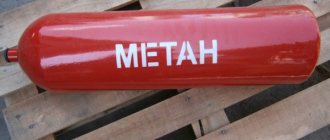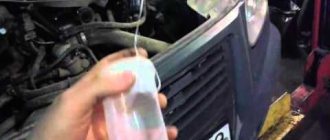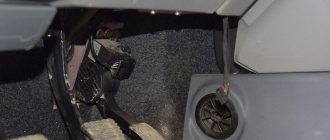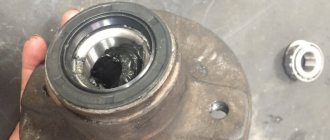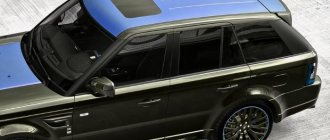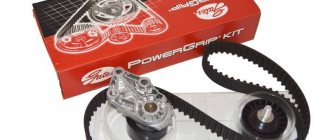Electrical wiring of LuAZ 969 - important features of the system that you should know
This car model was designed on the basis of the 967 model, which was produced for the military industry and had unique characteristics, it was an amphibian with a propeller, the ability to be dropped with a parachute and other characteristics that are not needed in civilian use. The main advantage is that the wiring of the LuAZ 969 is simple, and it is no different from the military version, so it’s not difficult to understand it.
A simple and very passable car is indispensable for off-road use.
Steering gearbox from gazelle on Luaz - search by DRIVE2
Installation and dismantling of equipment. /100tonn.com
Large welding store - low prices!
Installation of the Gazelle 2705 steering gearbox on LuAZ.
Good afternoon! Please tell me how to install a Gazelle steering
gearbox on a LuAZ
with a MeMZ 245 engine. Everything would work out beautifully, but I have a generator from Moskvich there and I wouldn’t want to redo it. I installed the engine through an adapter plate in front.
steering (reworked). — LuAZ 969, 1.9 l., 1978.
Review from LuAZ
969 - photograph.
Hi all. completed the steering
, more precisely
LuAZ
969 1978, petrol engine 1.9 l., 75 l. p., all-wheel drive, manual transmission
My option is probably only the RR from
GAZelle
, since it is not immediately visible, but under the hood it may not be.
Replacing the steering gear - LuAZ 969, 1.6 l., 1989.
It's time for the steering
gear
.
As I wrote earlier, the choice fell on
Mercedes 123
gearbox the gearbox
.
Now the gearbox
is protected from dirt and excess moisture. It was installed in such a way that there was a direct connection.
Features of wiring in this model
Let us note right away that in the production of the cars in question, economy has always been a priority, so you can find models with one drive axle (there were simply not enough of these units at one time) and other solutions that reduced the cost, but negatively affected the reliability and durability of the structure.
The following factors can be noted:
- Most cars were equipped with a generator without an integrated board; it did not differ in power, so when idling, most often the battery was not charged, which had a very negative impact on the operation of the battery and sometimes, especially in the cold season, the battery could simply run out.
This diagram is valid for all cars manufactured from March 1981 to August 1986, equipped with a generator without an integrated board
- But generators with an integrated circuit worked much better; they were distinguished by better charging and stable operation of the design. The wiring diagram is similar to the one above, the only difference is in the generator unit. You can easily see the difference yourself by comparing the diagrams in the photo; the generator is indicated by the number 8.
An improved version of the generator caused changes in the circuit
Advice! Some car owners include more powerful generators in this scheme; this provides brighter light and stable battery charging at any speed.
- The wires themselves are not reliable and over time they begin to burn out, rot, or the insulation simply dries out and collapses. There are some simple tips on how to extend the life of the system with your own hands, but this will require time and effort - you need to lay all the harnesses in special corrugations and protect all contacts by installing high-quality terminals and protecting them with heat-shrinkable tubing.
- The electrical wiring of the LuAZ requires constant inspection in order to identify faults at the stage of their development, since if you get stuck in the middle of off-road conditions, the work will become much more complicated.
- In the nineties, cars began to be equipped with ignition switches without steering column locking , which again caused a change in the circuit, but this is not so fundamental. In general, it can be noted that the design has remained virtually unchanged, therefore, having understood one modification, you can easily understand all the others.
- In order to better understand which electricity consumers are included in the system, look at the circuit diagram below. This is a kind of instruction that will help you understand how the circuit works and what is included in it.
From this picture it is easy to understand the features of LuAZ electrical equipment
Some features of repair work
If you have any malfunctions, you should fix them immediately. The work is not complicated, because there are no electronics in the system; we will consider only the most general recommendations, without delving into the process.
Maintenance
For work, you will need a simple set of tools and a tester, with which you can quickly and accurately diagnose the system and check the presence of current in a particular node.
In general, here are some tips:
- If the generator does not provide high-quality charging, it is best to replace it, and there can be many options - from VAZ units to foreign cars, the main thing is to choose the optimal configuration of the equipment so that you can get by with a minimum number of alterations, most often you need a bracket, the rest is adjusted locally.
If you are installing a more powerful generator, use this circuit
- When replacing individual cores, be sure to follow the color coding, otherwise it will be difficult to figure out what goes where. That is, if you change the red wire, then replace it with a new product of the same color. When the required option is not available, you can temporarily use what you have, but then be sure to replace it with the correct one.
This connection is not allowed
- Pay special attention to all connections, as they are the most common cause of malfunctions. Twists and electrical tape are unacceptable; you must purchase crimping pliers, install terminals on all ends of the wires, and cover the crimping area with heat-shrink tubing . In some cases, you can make a connection using a soldering iron, but after that it must be carefully tinned and covered with the same heat shrink.
This is what a correctly assembled contact looks like
Replacing electrical wiring
If the LuAZ wiring is in a very poor condition, then it is easier to replace it completely than to work with individual components.
The following can be noted on this issue:
- Finding an original kit is often very difficult, so as a way out of the situation you can use a ready-made wiring kit from a VAZ 2106. It is ideal for doing the job; you just need to understand the diagram in order to understand where each node should be connected. The length of all the harnesses is quite sufficient, and the price of this option is quite affordable.
The history of the appearance of LuAZ cars
The general features of a civilian all-terrain vehicle can be seen in the appearance of the “front line transporter” (TPK) - this is what the LuAZ 967 amphibian was called in the documentation of military units, adopted for service in the late 60s.
For reference: In fact, the LuAZ 969 is a deep conversion of the military TPK. Only the concept is taken as its basis, and the main components and assemblies are designed anew. Only the electrical wiring of the LuAZ, as well as the power unit, were transferred from a military vehicle to a civilian vehicle.
In addition, the model under development, mass production of which began in 1967, also used:
- Conceptual development by NAMI, which had the index 049;
- Amphibian body structure without a propeller (movement through water is carried out by the energy of rotating wheels);
- Simplified “civilian suspension” of the front edge transporter (not providing for parachute landing).
For reference: the almost complete unification of parts and assemblies gave one undeniable advantage - the price of the car remained low. Therefore, in the case of LuAZ 969, exactly this decision was made - maximum compatibility with the military amphibian.
Differences in configuration
It is necessary to distinguish between externally identical LuAZ 969 cars:
- When assembling the first batches of cars, the plant experienced a shortage of components and assemblies, so the first 7,000 cars with a 4x2 wheel arrangement had only front-wheel drive. This configuration was designated by the LuAZ-969V index and was equipped with a MeMZ-969 power unit with a power of 30 hp;
- Beginning in 1971, the shortage of spare parts was overcome, the car got rid of the “B” prefix, but received 4x4 all-wheel drive.
There was also a little confusion in the designations of the car:
- In the documentation of 1964, the car was referred to as ZAZ 969;
- A year later he received the civil name "Volyn";
- Then its assembly was finally entrusted to the plant in Lutsk, and the car was named LuMZ 969V;
- LuAZ 969V – the final version of the name for the front-wheel drive configuration (4x2);
- LuAZ 969 is a 4x4 vehicle.
Modernization of LuAZ 969
In 1975, the plant launched the LuAZ 969A, which:
- Received an improved MeMZ-969A engine with a volume of 1.2 liters. and increased to 40 hp. power;
- Received a redesigned front end.
Since 1979, the plant switched to the production of LuAZ 969M, which has:
- A hydraulic vacuum booster and separate brake drive appeared;
- New doors with locks and rotary windows;
- New safety instrument panel;
- Driver and passenger seats from a Zhiguli car.
For reference: LuAZ wiring was constantly modified due to unstable supplies of components to the assembly line. Therefore, the manufacturer indicated the years of production of the vehicles on all diagrams.
LuAZ 969 cars were quite reliable and repairable, which allowed the owners to carry out maintenance and care with their own hands. However, almost all the years of production, the plant in Lutsk experienced problems with the supply of spare parts:
- In the early 90s, there were interruptions in the supply of ignition locks that function as an anti-theft system. The automaker was forced to equip the car with other locks, which led to a change in the electrical circuit;
- Not all cars were equipped with certain parts. Even cars of the same year could have differences in configuration;
- Of particular note is the wiring, which, due to low quality and frequent changes of suppliers, had differences in color and location inside the harnesses under the hood and in the cabin (see also the UAZ 3303 wiring diagram).
General description of the family[ | ]
The family included the following production models:
- ZAZ-969V
/
LuAZ-969V
/
LuMZ-969V
(1966-1972) - front-wheel drive, with power take-off shaft; - ZAZ-969
/
LuAZ-969
(1971-1975) - all-wheel drive, with rear differential lock; - LuAZ-969A
(1975-1979) - modernization of LuAZ-969. Engine 1.2 l, 40 l. With.; - LuAZ-969M
(1979-1996) - modernization of LuAZ-969A. Separate brake drive, new exterior and interior lines.
Cars are also closely related to it:
- LuAZ-1301
; - LuAZ-1302
(1990) - modernization of LuAZ-969M. Engine 1.1 l, 53 l. With.; - LuAZ-2403
.
LuAZ-969 was the first Soviet front-wheel drive car (the “969B” version without rear axle drive). Also, LuAZ-969 is the first SUV that was a consumer item, that is, officially sold “for personal use.” In addition, LuAZ-969 is the first serial Soviet car created specifically for the needs of village residents.
The functional design and simplified body trim, providing only minimal comfort, corresponded to the purpose of the car.
Light SUVs of similar class for the army or rural residents were also created abroad - for example, the West German DKW Munga (1956-1968), Haflinger (1959-1974) and Volkswagen Iltis (1978-1988), Farmobil (1962-1966), East German Wartburg 353—400 Jagdwagen and others.
Ignition system features
Since the civilian version of the car could not swim, the ignition systems were designed according to the classical scheme:
- Battery-coil design with one spark plug per cylinder;
- The battery is standard 6ST-55;
- Alternating current generator G-501 (or G-502 on modifications);
- Rectifier unit BVG-2A;
- Blocking relay;
- Fuses (6 pcs).
Also on the instrument panel there are 2 thermometallic fuses with a nominal value of 20A for protection:
- Heater electrical circuit;
- Lighting of the body and engine compartment;
- Plug sockets;
- Sound signal;
- Brake alarm systems (see also wiring diagram Niva 21213).
Advice: If the protection is triggered, it is necessary to determine the cause of the failure, eliminate it and restore the circuit by pressing the thermal fuse button on the instrument panel.
A bimetallic fuse is also used to protect the windshield washer and wiper circuit. It is installed under the hood and has a response threshold of 3.5A.
Technical characteristics of LuAZ 969m
- The carrying capacity of the LuAZ-969M is 450 kg.
- The permissible trailer weight is 300 kg.
- The weight of the car is 960 kg.
- Total weight - 1360 kg.
- On the front axle - 690 kg.
- On the rear axle - 670 kg.
- Ground clearance of the front axle is 280 mm.
- Rear axle ground clearance - 300 mm.
- Maximum speed - 85 km/h
- Fuel consumption - 10 l.
- Engine MeMZ-969A, carburetor, four-stroke, four-cylinder, air-cooled
- Cylinder diameter and piston stroke, mm - 76X66
- Working volume - 1,197 liters.
- Compression ratio - 7.2 atm.
- Maximum power, l. With. (kW) - 40 (29.4) at 4200-4400 rpm
- Maximum torque, kgf-m (N.m) - 7.6 (74.5) at 2700-2900 rpm
- Carburetor brand - K-127
- Battery - 6ST-55
- Breaker-distributor - R114-B
- Ignition coil - B115-V
- Spark plugs - A23
- Generator - G502-A
- Relay regulator - PP310-B
- Starter - ST368
- Dry single disc clutch
- The gearbox is a four-speed with synchronizers in all forward gears and has an additional reduction gear.
- Tire radius - 13
- Fuel tank - 34 l.
- Gasoline A-76
